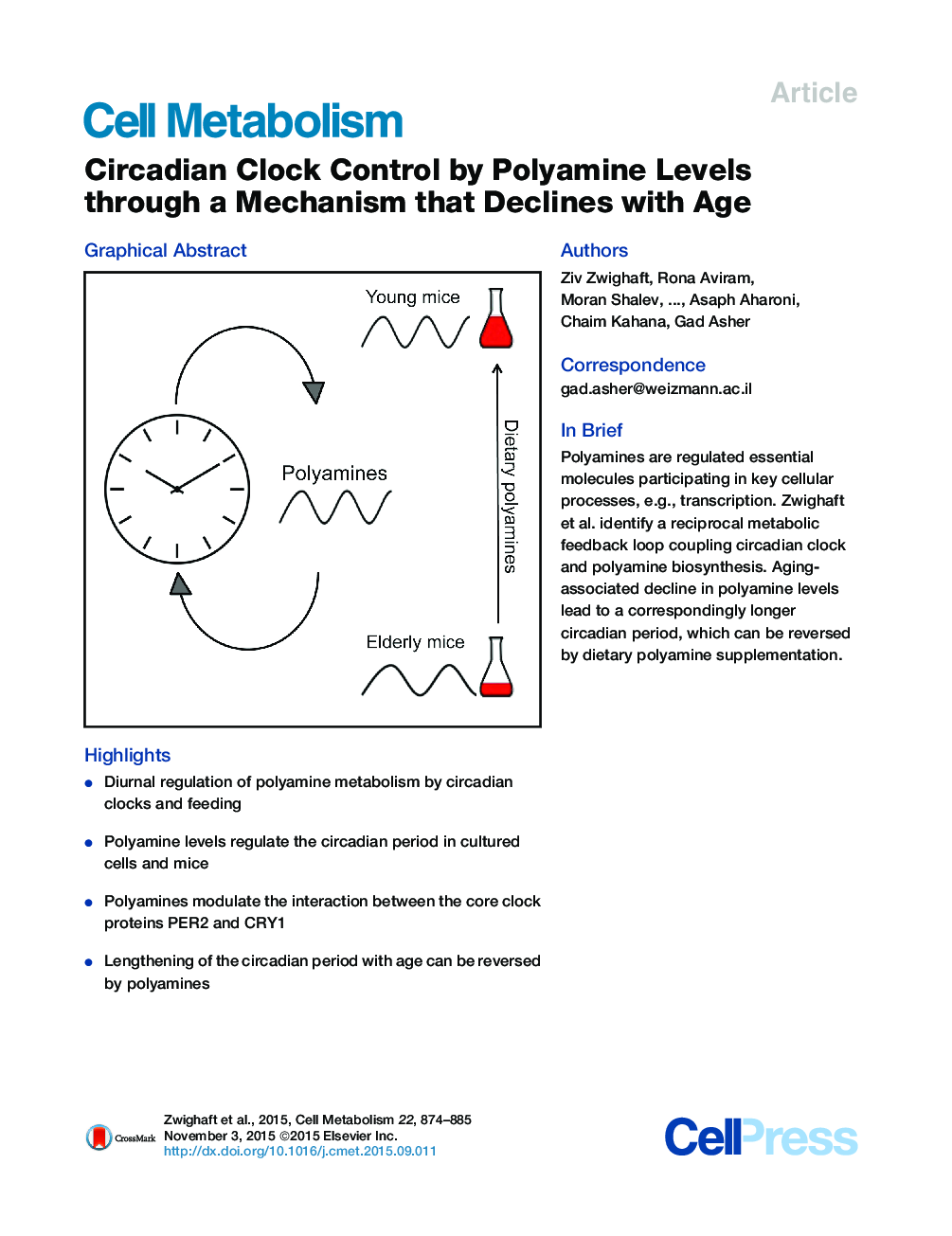| کد مقاله | کد نشریه | سال انتشار | مقاله انگلیسی | نسخه تمام متن |
|---|---|---|---|---|
| 2792559 | 1155063 | 2015 | 12 صفحه PDF | دانلود رایگان |
• Diurnal regulation of polyamine metabolism by circadian clocks and feeding
• Polyamine levels regulate the circadian period in cultured cells and mice
• Polyamines modulate the interaction between the core clock proteins PER2 and CRY1
• Lengthening of the circadian period with age can be reversed by polyamines
SummaryPolyamines are essential polycations present in all living cells. Polyamine levels are maintained from the diet and de novo synthesis, and their decline with age is associated with various pathologies. Here we show that polyamine levels oscillate in a daily manner. Both clock- and feeding-dependent mechanisms regulate the daily accumulation of key enzymes in polyamine biosynthesis through rhythmic binding of BMAL1:CLOCK to conserved DNA elements. In turn, polyamines control the circadian period in cultured cells and animals by regulating the interaction between the core clock repressors PER2 and CRY1. Importantly, we found that the decline in polyamine levels with age in mice is associated with a longer circadian period that can be reversed upon polyamine supplementation in the diet. Our findings suggest a crosstalk between circadian clocks and polyamine biosynthesis and open new possibilities for nutritional interventions against the decay in clock’s function with age.
Graphical AbstractFigure optionsDownload high-quality image (99 K)Download as PowerPoint slide
Journal: - Volume 22, Issue 5, 3 November 2015, Pages 874–885
